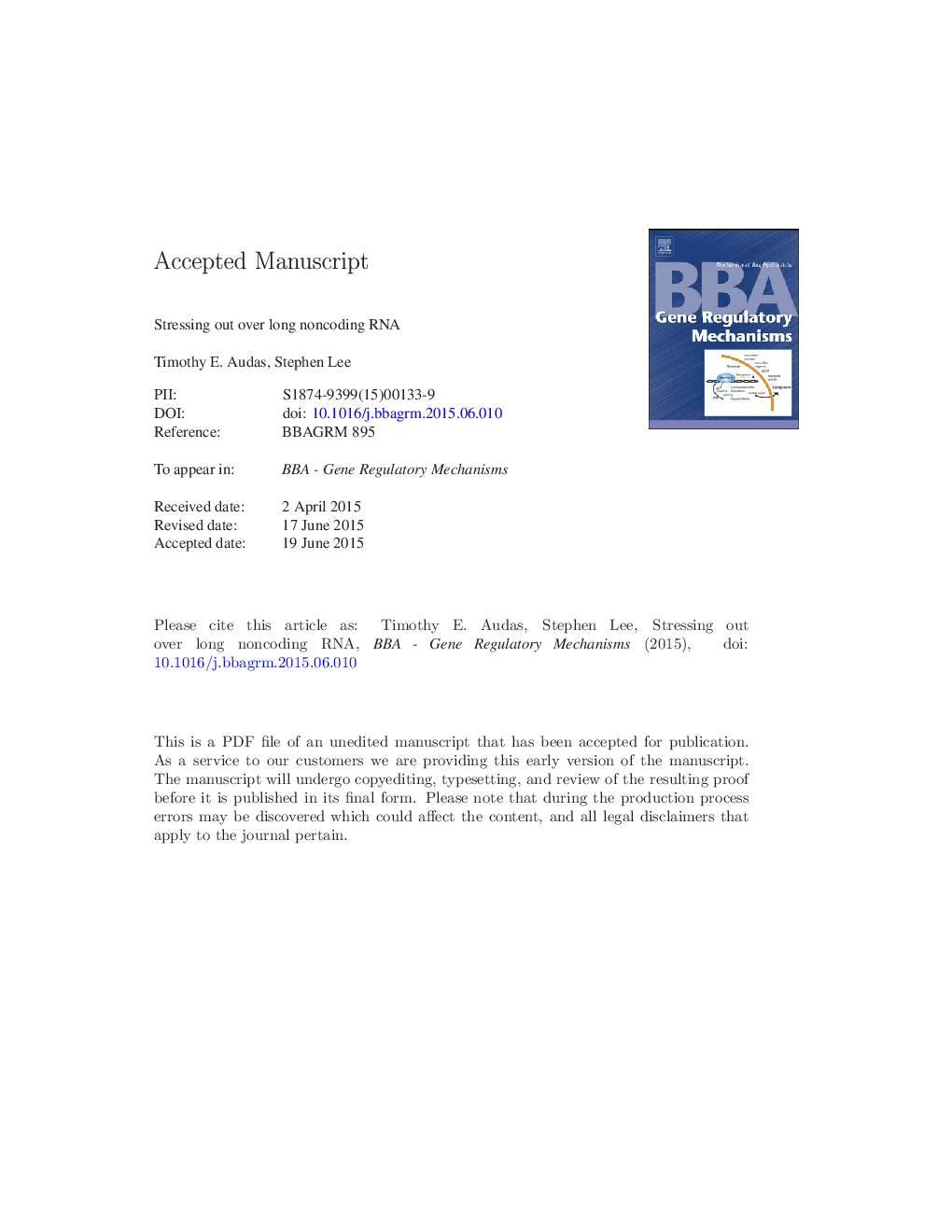| Article ID | Journal | Published Year | Pages | File Type |
|---|---|---|---|---|
| 10798953 | Biochimica et Biophysica Acta (BBA) - Gene Regulatory Mechanisms | 2016 | 30 Pages |
Abstract
Genomic studies have revealed that humans possess far fewer protein-encoding genes than originally predicted. These over-estimates were drawn from the inherent developmental and stimuli-responsive complexity found in humans and other mammals, when compared to lower eukaryotic organisms. This left a conceptual void in many cellular networks, as a new class of functional molecules was necessary for “fine-tuning” the basic proteomic machinery. Transcriptomics analyses have determined that the vast majority of the genetic material is transcribed as noncoding RNA, suggesting that these molecules could provide the functional diversity initially sought from proteins. Indeed, as discussed in this review, long noncoding RNAs (lncRNAs), the largest family of noncoding transcripts, have emerged as common regulators of many cellular stressors; including heat shock, metabolic deprivation and DNA damage. These stimuli, while divergent in nature, share some common stress-responsive pathways, notably inhibition of cell proliferation. This role intrinsically makes stress-responsive lncRNA regulators potential tumor suppressor or proto-oncogenic genes. As the list of functional RNA molecules continues to rapidly expand it is becoming increasingly clear that the significance and functionality of this family may someday rival that of proteins. This article is part of a Special Issue entitled: Clues to long noncoding RNA taxonomy1, edited by Dr. Tetsuro Hirose and Dr. Shinichi Nakagawa.
Related Topics
Life Sciences
Biochemistry, Genetics and Molecular Biology
Biochemistry
Authors
Timothy E. Audas, Stephen Lee,
